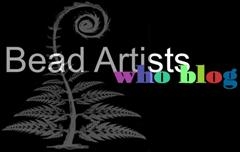
Opal Yellow came out when many of the other “handmade” Effetre colors came out - they are pulled by hand instead of machine pulled. This means that there are 8 zillion different batches, and the rods can be kind of, well, irregular.
You’ll find this color in a whole bunch of different diameters and rod colors. Some have tiny holes running the length of the rod - and if you’re like me, you learn to hate those holes. They make the glass bubble when melted - so that’s something you might want to keep an eye out for.
Also, be very careful, as this is one color that tends to be shocky - introduce it to the flame slowly, otherwise some rods may shatter and fly. Wear your safety glasses!!
As for color batches - well, that’s the fun part with this color. It comes in quite a few shades, running from a pale buttercream shade to a deep, blushing peach/mustard kind of deal. Look for the rose and yellow rings on the ends of these rods - the more pronounced they are, the more of a striking batch you have.
All of the batches tend to work about the same - it’s a buttery soft glass that melts relatively quickly and takes a few seconds to cool enough to add decorative elements.
Opal Yellow strikes like nobody’s business. And it’s pretty sensitive to temperature as well. You can use it as a base and then strike in different flames to see what it does - there’s lots of subtle color changes with this glass. The color changes even more as you add decorative elements on top of a base. Depending on how dark the batch is to begin with, you’ll get variations of pale yellow, cream, tan, pale pink, pale peach and pale orange - often all on the same bead. Once you get to know this glass, you can gain some control over the colors you might be getting.
As for layering, this glass is just wonderful under all the amber and brown transparents, and is particularly pretty when layered with Rubino Oro. If you’re into animal print styles, then this is the color for you!
Use it with some of the handmade colors made around the same time, like opaque Purple, Turquoise and Copper Green, and you can get some fun reactivity out of it. Make twisties with it and some of those colors for a real treat!
Opal Yellow is also reactive with itself - it can create color striations and a bit of separation of colors when layered on one bead.
I don’t use silver on my beads (yet), but I hear and see that other artists have a lot of fun using Opal Yellow with silver and with frits. If you’re into that, it may be something you want to try.
Overall, I would say that Opal Yellow is the one color, besides pink, that I have used the most of. I just love it and I hope it never goes away!






























No comments:
Post a Comment